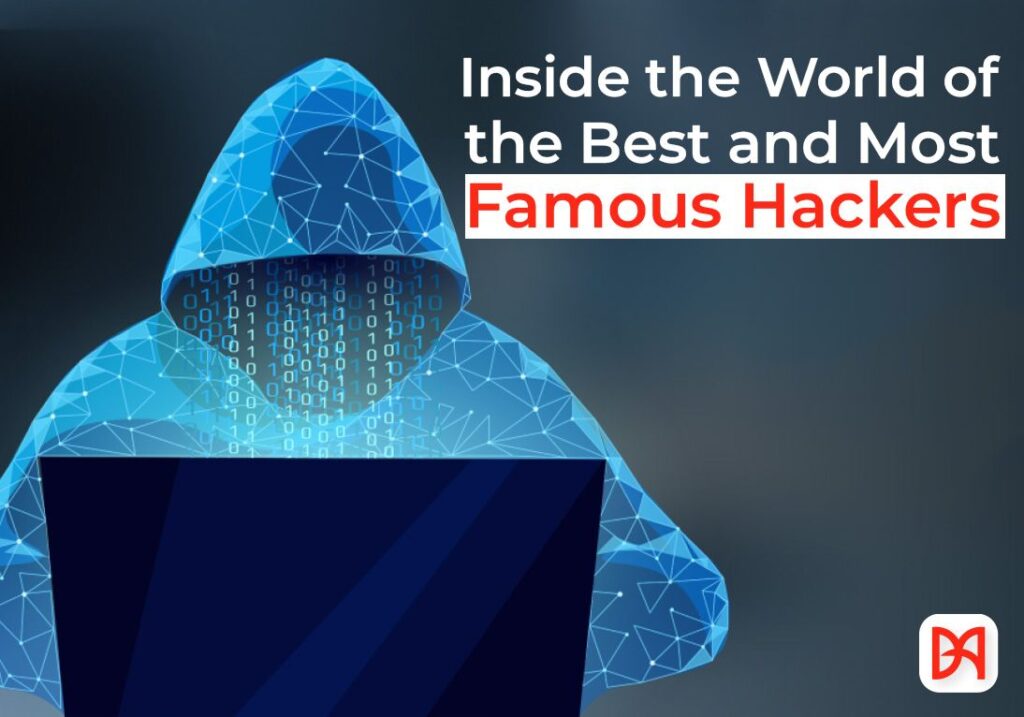Are you curious about the world of Famous hackers? In the digital age, today “hacker” has become a synonym for negativity. It pictures dark places, hooded figures bent over keyboards, and the atmosphere of approaching catastrophe. However, the question on who is a hacker and a hacker’s motive is hard to pin down. In this blog, we will shed some light on the mysterious hackers realm by defining hackers and examining the motivations behind their actions.
Table of Contents
ToggleDifferent Types of hackers
There is a need to realize that there are different types of hackers that come in different sizes, shapes, and contexts. To differentiate them from their intent and ethical concerns, an interesting aspect of them is that there are distinct categories. Three different types of hackers are classified as white hat hackers, black hat hackers, and gray hat hackers.
White hat hackers: The ethical hackers
The “white hat hackers (Types of hackers),” or the ethical hackers, use their hacking skills for the greater good. They are focused on discovering weaknesses in computer systems and networks so that they can make these organizational systems more secure. These hackers act within the legal boundaries and they can be employed as cybersecurity consultants or professionals. Their core objective is to ensure that individuals and businesses are not victims of malicious attacks by actively detecting possible shortfalls and suggesting remedies.
Black hat hackers: The malicious hackers
On the other hand, those guys who use gray for unlawful purposes are commonly seen as black hatters. They make use of loopholes in the information systems and networks to benefit themselves or damage others. A hackers mind commits acts like theft of important data, spreading malware, and conducting cyber-attacks. Black hat hackers work illegally and have an individual motive, mostly to acquire money or be loyal to a person after a clash.
Grey hat hackers: The in-between
The gray hats (Types of hackers) are in a gray area between the black hats and the white hats. They are not malicious as compared to the black hat hackers but that does not mean that they do not engage in illegal or unethical activities. Grey hat hackers can enter systems without permission by intentionally disclosing weaknesses to owners that want them to improve their security measures. Their actions so frequently stand on the edge where the transitions between the regarded as good and evil are often blurred, as they act on their own volition but with unspoken approval and good intentions.
Famous hackers throughout history
Throughout time, many hackers turned into legends for their knowledge, goals, or just because they are so bold. One notable example is Kevin Mitnick, a previous black hat hacker who later changed track and became a white hat hacker (Famous Hackers). Mitnick’s accomplishments from the 1980s to the 1990s earned him a reputation as one of the FBI’s top-wanted hackers. The second significant figure that should be mentioned is Adrian Lamo (Famous hackers) , who gained a reputation for hacking into various well-known systems like The New York Times and Microsoft. Lamo was later well-known for handing in Chelsea Manning who was a whistleblower that leaked classified documents.
Understanding A hackers Mind
A deep understanding of hackers’ world depends on getting into their mindset. Although the majority of people believe that hackers only aim to carry out harmful acts and benefit themselves, the reality is far from it. The majority of hackers are driven by curiosity, the quest for knowledge, or the rush. They look upon cyberspace as a starting point where they can utilize their abilities and go on to test their limits. If you understand A hackers mind mentality you can give yourself an advantage by learning what attracts hackers and thus anticipate the vulnerabilities.
The rise of Anonymous hackers
In the last few years, a new group of hackers has come onto the scene – Anonymous hackers. This is the category under which the three groups/people operate as Anonymous hackers and are famous for their politically motivated actions. It is usual for them to go after both organizations or individuals who they believe are oppressive or corrupt, trying to spotlight the evil that they do. Cyber attackers have made a name for themselves all over the place in regards to how they were used in demonstrations, cyber-attacks, and leaking classified information. Anonymous hackers have fueled the argument about whether hackers are a good or a bad part of our digital world and the significance this can have for society.
How to protect yourself from hackers
It is now necessary for you to take preventive measures against different Types of hackers that are increasing the danger to you and your digital property every day. The following measures can help mitigate the risk:
1. Keep your software and devices up to date:
Frequently upgrade your operating system, programs, and antivirus software to cover any security loopholes.
2. Use strong, unique passwords:
Try not to use the usual passwords and think about applying a password manager to generate and store uncommon passwords for different accounts.
3. Enable two-factor authentication:
Enable two-factor authentication wherever possible as it adds an additional layer of security for your accounts.
4. Be cautious of phishing attempts:
Be careful when dealing with messages, e-mails, or links that can lead you to fake, phishing websites. These websites are aimed at stealing your personal information.
5. Use a reliable VPN:
A Virtual Private Network (VPN) can encrypt your internet traffic and help your online privacy.
Conclusion
Finally, we can conclude that hackers do not constitute a homogeneous group but are divided into many different types with different motivations and aims. The practice of good hackers aims at increasing cybersecurity, whereas that of bad hackers steer them to commit unlawful acts and all others occupy the gray area. Awareness of multiple varieties of hackers and knowledge of A hackers mind can assist people and organizations’ safety in our technologically connected environment. Consequently, we should learn what steps to take in order to avoid the attacks, which are conducted by hackers, and thus create safer digital space for every user.




